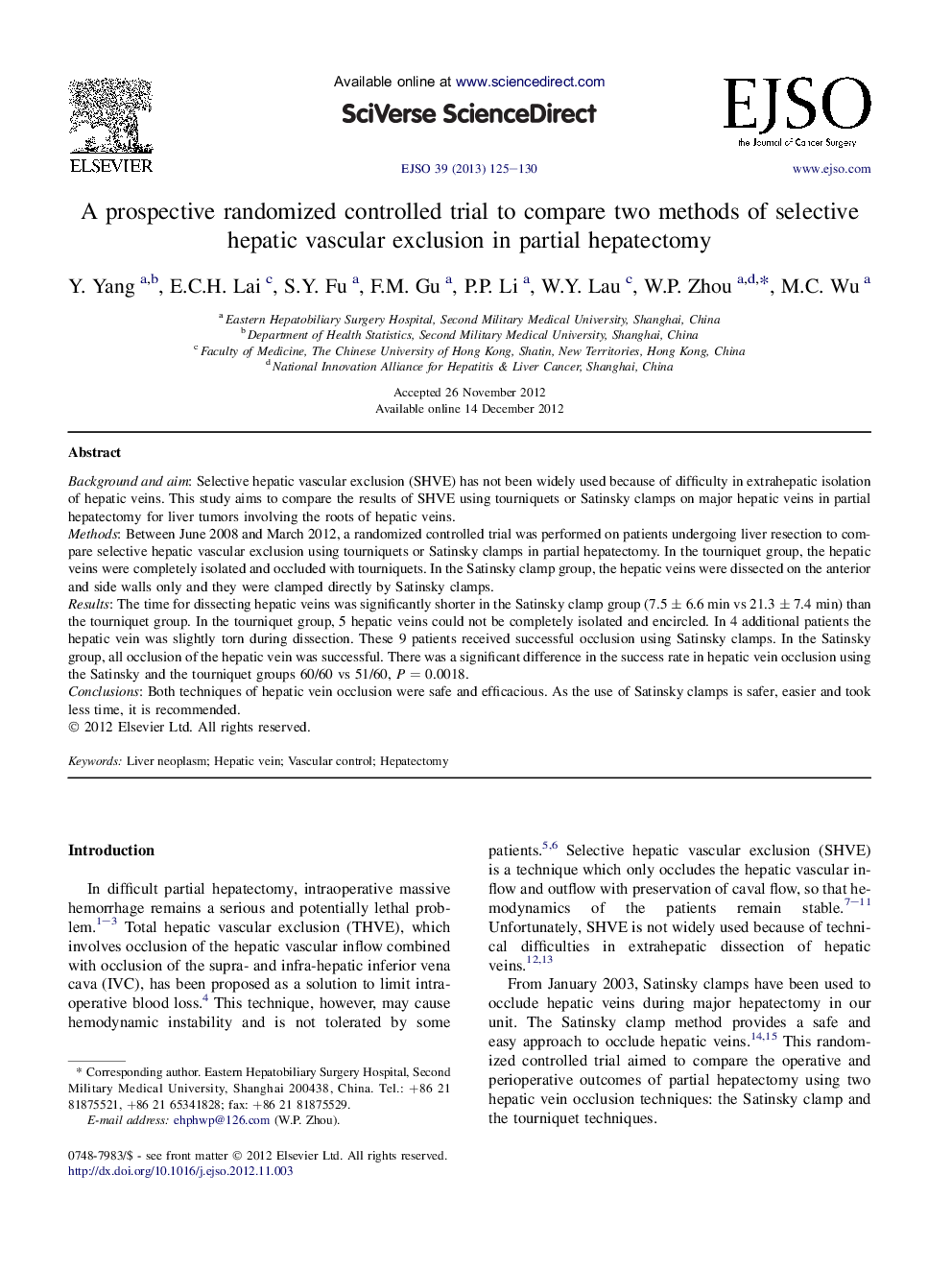| Article ID | Journal | Published Year | Pages | File Type |
|---|---|---|---|---|
| 6191842 | European Journal of Surgical Oncology (EJSO) | 2013 | 6 Pages |
Background and aimSelective hepatic vascular exclusion (SHVE) has not been widely used because of difficulty in extrahepatic isolation of hepatic veins. This study aims to compare the results of SHVE using tourniquets or Satinsky clamps on major hepatic veins in partial hepatectomy for liver tumors involving the roots of hepatic veins.MethodsBetween June 2008 and March 2012, a randomized controlled trial was performed on patients undergoing liver resection to compare selective hepatic vascular exclusion using tourniquets or Satinsky clamps in partial hepatectomy. In the tourniquet group, the hepatic veins were completely isolated and occluded with tourniquets. In the Satinsky clamp group, the hepatic veins were dissected on the anterior and side walls only and they were clamped directly by Satinsky clamps.ResultsThe time for dissecting hepatic veins was significantly shorter in the Satinsky clamp group (7.5 ± 6.6 min vs 21.3 ± 7.4 min) than the tourniquet group. In the tourniquet group, 5 hepatic veins could not be completely isolated and encircled. In 4 additional patients the hepatic vein was slightly torn during dissection. These 9 patients received successful occlusion using Satinsky clamps. In the Satinsky group, all occlusion of the hepatic vein was successful. There was a significant difference in the success rate in hepatic vein occlusion using the Satinsky and the tourniquet groups 60/60 vs 51/60, P = 0.0018.ConclusionsBoth techniques of hepatic vein occlusion were safe and efficacious. As the use of Satinsky clamps is safer, easier and took less time, it is recommended.
